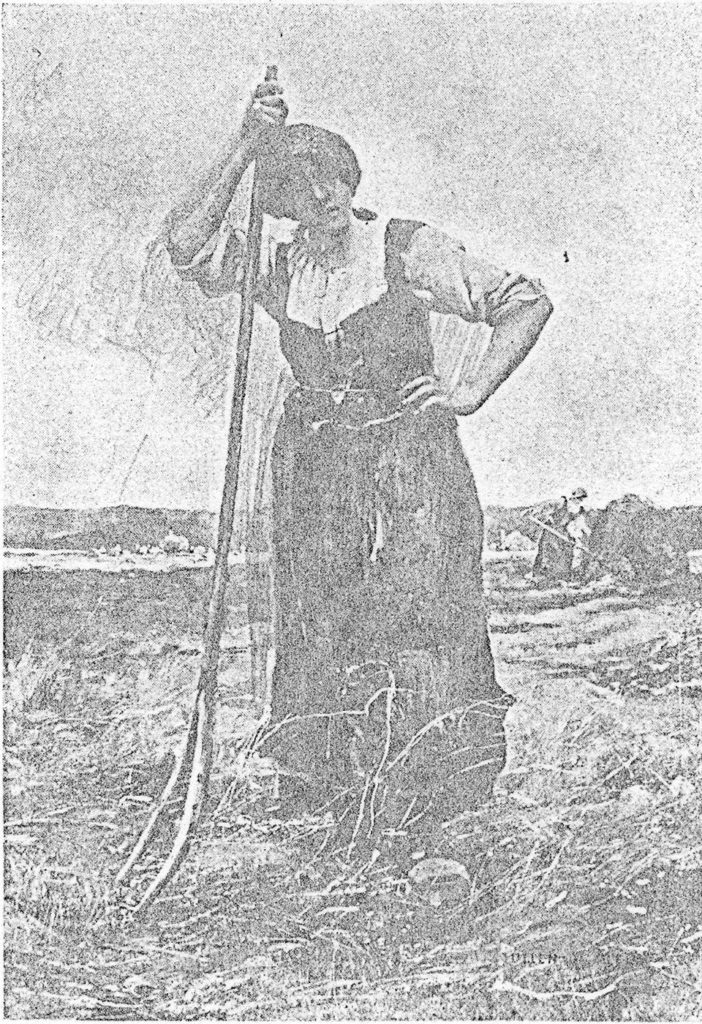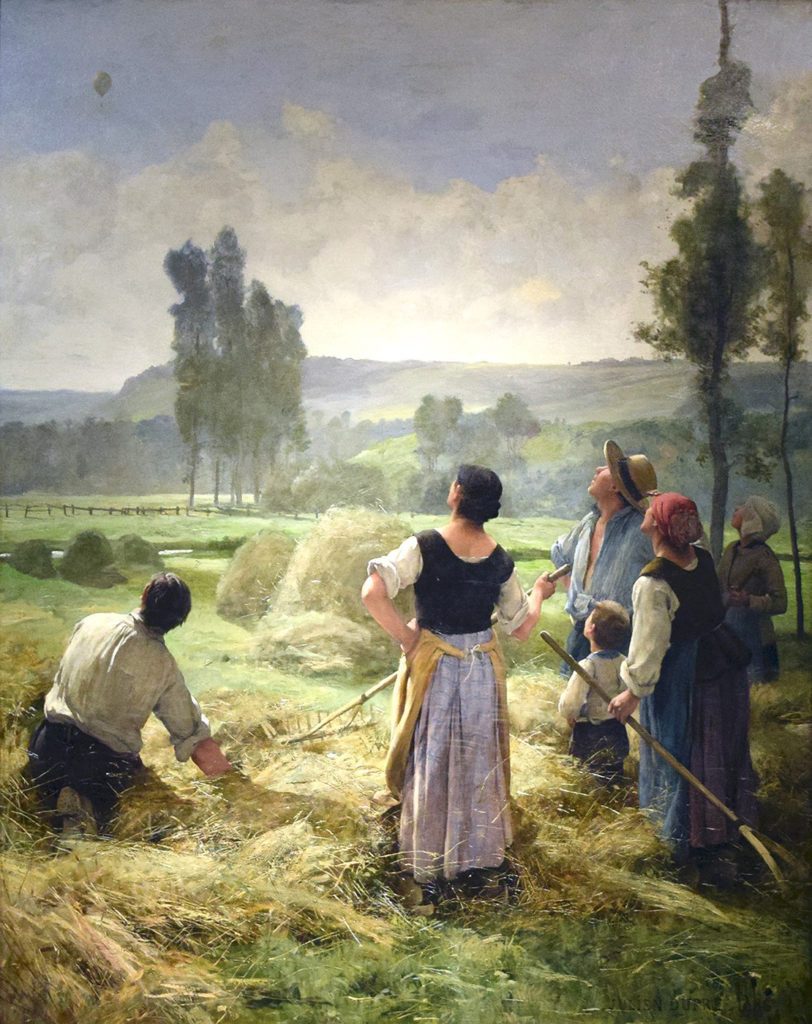A Break from the Harvest
Harvesters seated on hay stacks enjoying their meal is a recurring theme. The models who posed for these images reappear consistently throughout Dupré’s compositions of this subject. Presumably they were either members of the Dupré-Laugée extended family or local people who were willing to pose for the painter. Here, the standing man with the mustache…
Read MoreLa glaneuse
The solitary figure of a woman standing in a meadow in this painting differs slightly from other canvases with similar images in that there are no background features such as livestock, haystacks or distant buildings. She grasps a hayfork, but there is no hay field visible nearby, nor are there any other indications of either…
Read MoreLe gouter
Le repos
Harvesters
A Haymaker
Femme versant à boire
Le ballon
Dupré’s large Salon painting, The Balloon (Le ballon), takes the subject of hot air balloon flight as the focal point of his narrative. Although not a typical theme in French painting, the subject was nevertheless popular in the nineteenth century. France was home to the inventors of the hot air balloon, Joseph-Michel Montgolfier (1740-1810) and…
Read MoreLa brouette
Le troupeau d’oies
Children Feeding Geese is listed as Le troupe d’oies (A Flock of Geese) in Dupré’s account book (no. #32) in 1881. When he sold it to Michel Knoedler that same year, the art dealer listed it as Gardeuse d’oies (Goose Girl) in his stock book.¹ As the painting made its way to the United States,…
Read More








